15 Colorful Foliage Plants That Don’t Mind the Cold
When winter sets in and the garden becomes a sea of bare branches, it can feel like color has disappeared entirely. But there are plenty of colorful foliage plants that thrive even in the colder months, offering vibrant shades that brighten up the dull landscape. These hardy plants not only survive the chill, they actually thrive in it, adding unexpected beauty to your outdoor space. Whether you want to create contrast with deep reds or bring a touch of evergreen brightness, these plants are up to the task. Best of all, they require little care during the colder months, so you can enjoy their vibrant leaves without the hassle.
This post may contain affiliate links, which helps keep this content free. Please read our disclosure for more info.
Japanese Blood Grass (Imperata cylindrica)
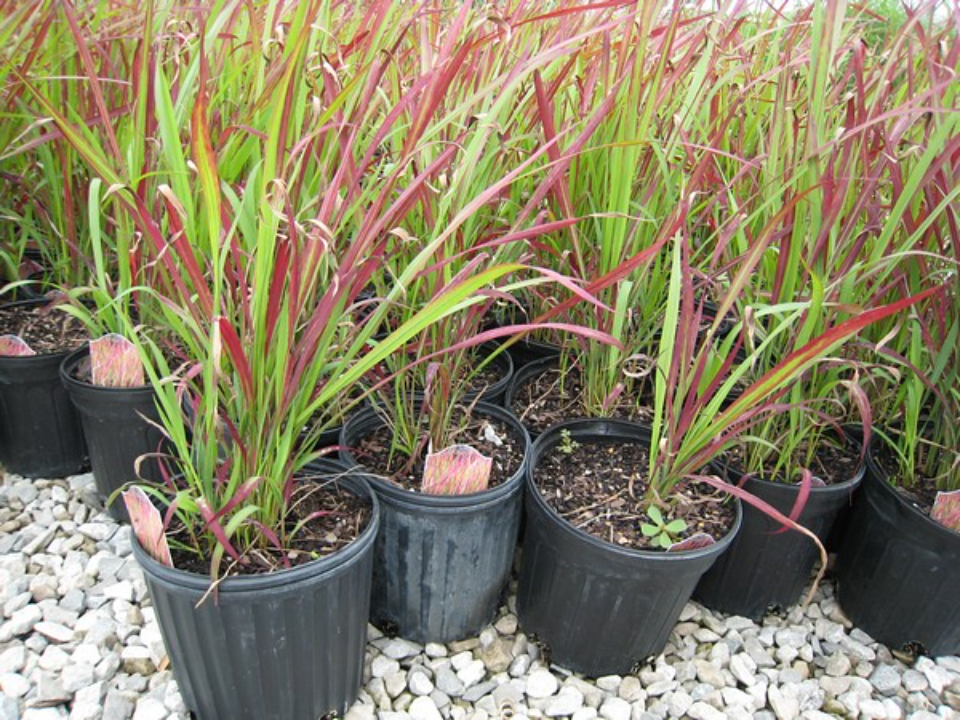
Japanese Blood Grass is an ornamental grass known for its striking red-tipped leaves that turn even more vibrant as the weather cools. This hardy plant can tolerate cold temperatures and still maintain its brilliant coloration, making it an excellent choice for winter interest in gardens.
Its unique appearance is perfect for adding texture and contrast to your garden’s layout. It can grow in full sun or partial shade, requiring little maintenance once established, and it thrives in a variety of soil types.
Heuchera (Coral Bells)
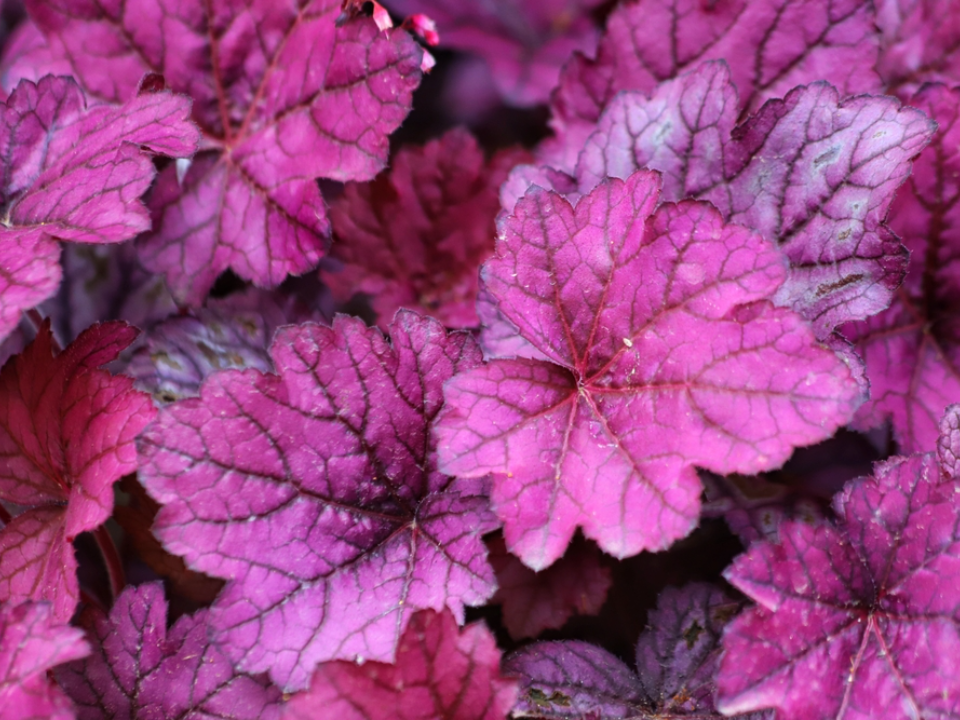
Heuchera is a popular perennial with an extensive color range that includes shades of burgundy, purple, and lime green. This plant’s foliage holds up well in cooler temperatures, maintaining its beauty through the fall and into the winter months.
It thrives in partial shade and is perfect for creating a low-maintenance ground cover. Heuchera is also appreciated for its compact size, making it an ideal choice for small garden beds or containers.
Wintergreen (Gaultheria procumbens)

Wintergreen is an evergreen ground cover that offers attractive red berries and glossy green leaves. This plant provides a pop of color even in the coldest months and is a great way to brighten up winter landscapes.
Its ability to grow in shade and moist, acidic soil makes it perfect for woodland gardens or as a ground cover. The berries, which appear in late summer and last through winter, add an extra layer of visual interest.
Brunnera (Brunnera macrophylla)
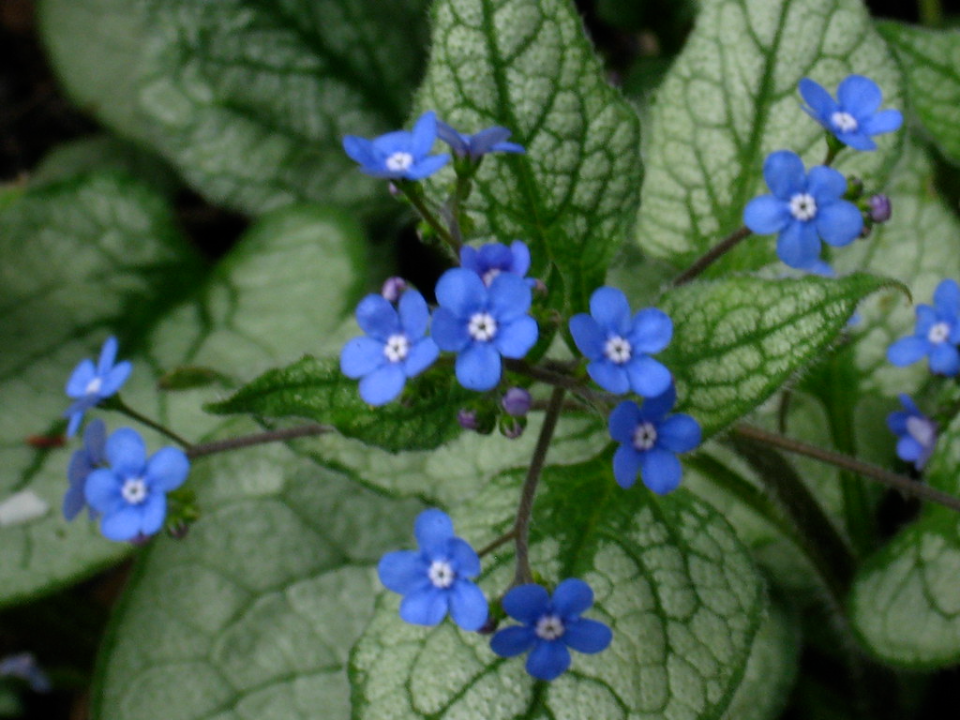
Brunnera, often called Siberian Bugloss, is known for its heart-shaped leaves and bright blue flowers. While the flowers add a touch of color in the spring, the plant’s foliage remains attractive throughout the year, turning a silvery hue in the colder months.
This perennial thrives in shady spots and moist, well-drained soil, making it a great option for shaded garden beds or as a ground cover under trees. It’s a reliable choice for gardens with cool, damp conditions.
Purple Fountain Grass (Pennisetum setaceum)

Purple Fountain Grass is a striking ornamental grass with deep purple foliage that holds its color through cooler weather. Its graceful, arching form adds a touch of elegance to gardens even during the colder months.
It’s a low-maintenance plant that thrives in full sun and well-drained soil, making it a versatile option for creating a focal point or edging along pathways in cold-weather gardens.
Red-Twig Dogwood (Cornus sericea)

Red-Twig Dogwood is a deciduous shrub known for its striking red stems that remain vibrant throughout the winter. The plant’s colorful bark provides a bold contrast to the white snow and cold weather, making it a stunning focal point in winter landscapes.
This shrub is highly adaptable, thriving in both sun and partial shade, and it is perfect for colder climates. It’s often used in gardens to add structure and color during the winter months, especially in areas where most plants have lost their foliage.
Hellebore (Helleborus)

Hellebore, or Christmas Rose, is a hardy perennial that blooms during the winter months. Its dark green leaves are complemented by delicate, cup-shaped flowers in shades of pink, purple, and white, making it a welcome sight in the cold season.
This plant thrives in shady, moist conditions and is often used in woodland gardens. Hellebore’s ability to bloom during the winter months adds color and life to gardens when most other plants are dormant.
Dusty Miller (Senecio cineraria)

Dusty Miller is a popular annual plant known for its silvery, felted leaves that can withstand cooler temperatures. While it may not survive extreme cold, it thrives in milder winter conditions, offering a soft, silvery texture that contrasts well with other foliage.
This plant is often used as a border or ground cover and works well in full sun. Dusty Miller is valued for its ability to brighten up garden beds, even in the cooler months, with its unique, silvery-gray leaves.
Snowberry (Symphoricarpos albus)
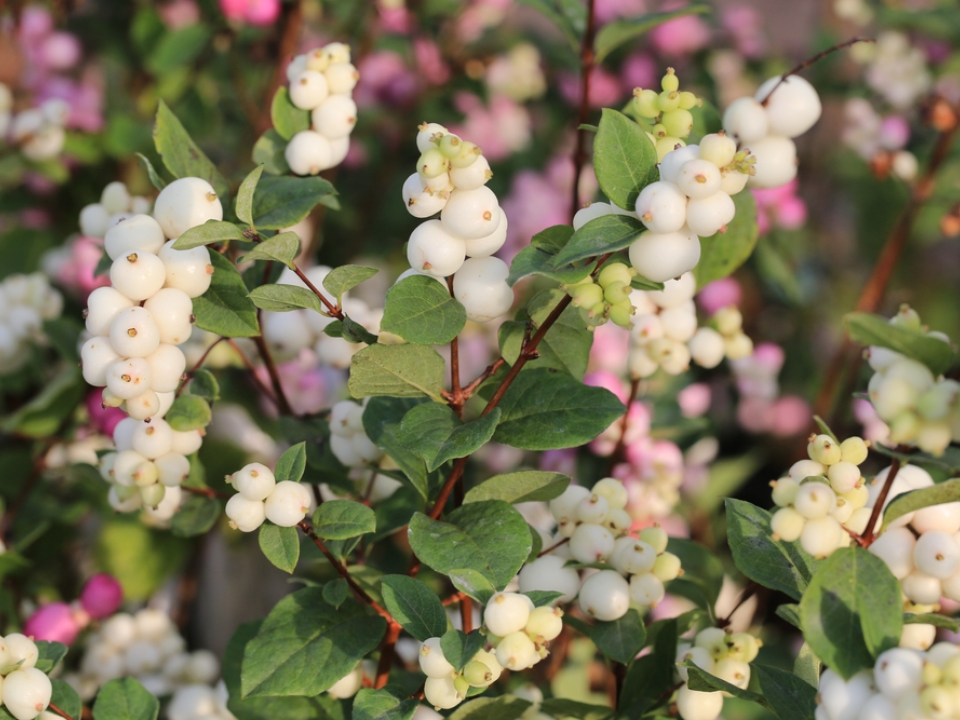
Snowberry is a hardy shrub known for its attractive white berries that persist throughout the winter months. Its pale green leaves provide a subtle backdrop to the vibrant berries, offering visual interest in colder climates.
This plant thrives in a variety of soil types and can handle both sunny and partially shaded locations. Snowberry is an excellent choice for adding winter interest and color to the garden, especially in areas where other plants may have died back.
Siberian Iris (Iris sibirica)
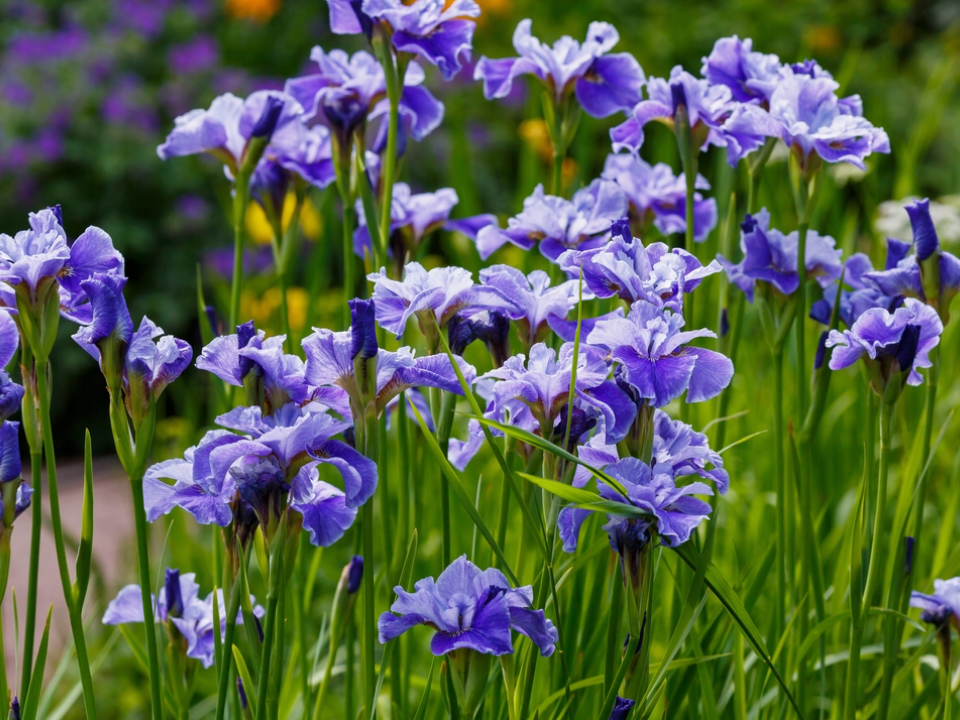
Siberian Iris is a perennial with slender, upright foliage that holds its structure even during the cold months. The plant’s leaves often turn yellow and golden as temperatures drop, creating a striking contrast in the garden.
It thrives in moist, well-drained soil and full sun, making it a great option for areas that receive plenty of light. The plant’s resilience to cold weather makes it a reliable choice for long-lasting winter color.
Sedum (Sedum spp.)

Sedum, also known as Autumn Joy, is a hardy perennial known for its succulent leaves and large clusters of pink or red flowers. While it blooms in late summer to fall, its colorful foliage continues to provide interest through the colder months.
This low-maintenance plant is drought-tolerant and thrives in full sun, making it perfect for garden borders or rock gardens. Sedum’s ability to survive harsh winters and still offer colorful foliage makes it an excellent winter plant for cold climates.
Winter Jasmine (Jasminum nudiflorum)

Winter Jasmine is a deciduous shrub that blooms in the winter, offering bright yellow flowers when most other plants are dormant. The plant’s slender green stems and yellow blooms provide an attractive contrast to the bleak winter landscape.
Winter Jasmine grows best in full sun to partial shade and can tolerate cold temperatures. It’s a great way to add a pop of color to fences, trellises, or garden walls in colder regions.
Coralberry (Symphoricarpos orbiculatus)
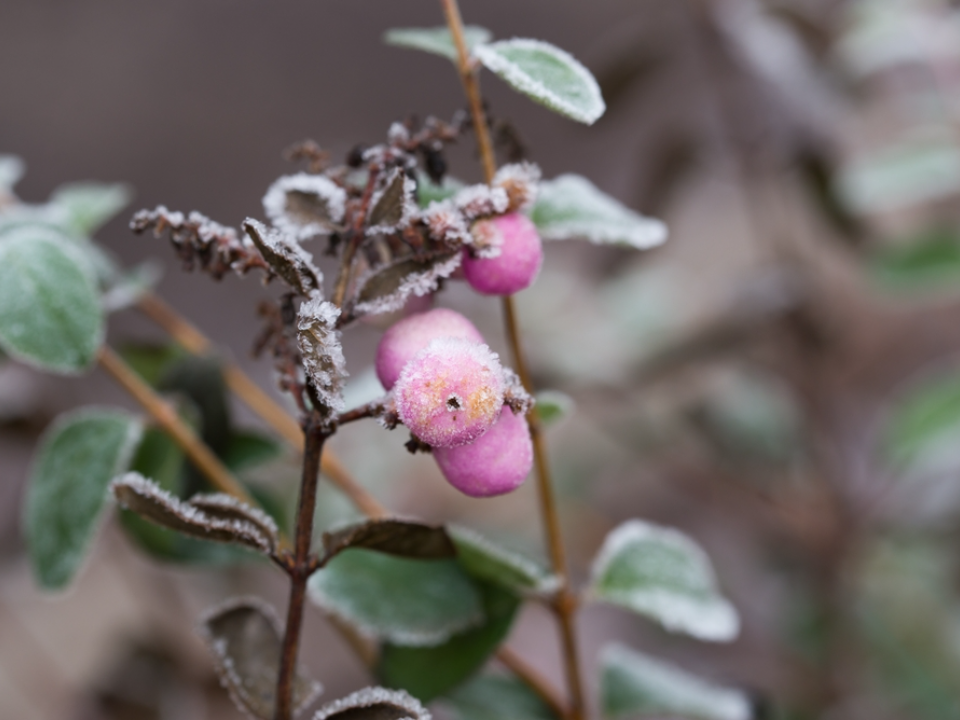
Coralberry is another shrub that adds color and interest to the garden in the colder months. Known for its pink to red berries, it maintains its colorful appearance well into the winter, making it a perfect option for creating seasonal focal points.
This hardy plant grows well in sun to partial shade and thrives in various soil types. Its ability to retain its berries throughout the winter makes it a great choice for adding long-lasting color to your landscape.
Mountain Ash (Sorbus aucuparia)

Mountain Ash, also known as Rowan, is a small tree that offers bright red berries in the fall and winter. The plant’s leaves turn golden-yellow in the autumn and hold their vibrant color through the colder months, providing visual appeal in the garden.
This tree prefers full sun and well-drained soil, thriving in colder climates. The berries also provide food for birds, making Mountain Ash a great option for wildlife-friendly gardens during the winter season.
Lavender (Lavandula angustifolia)
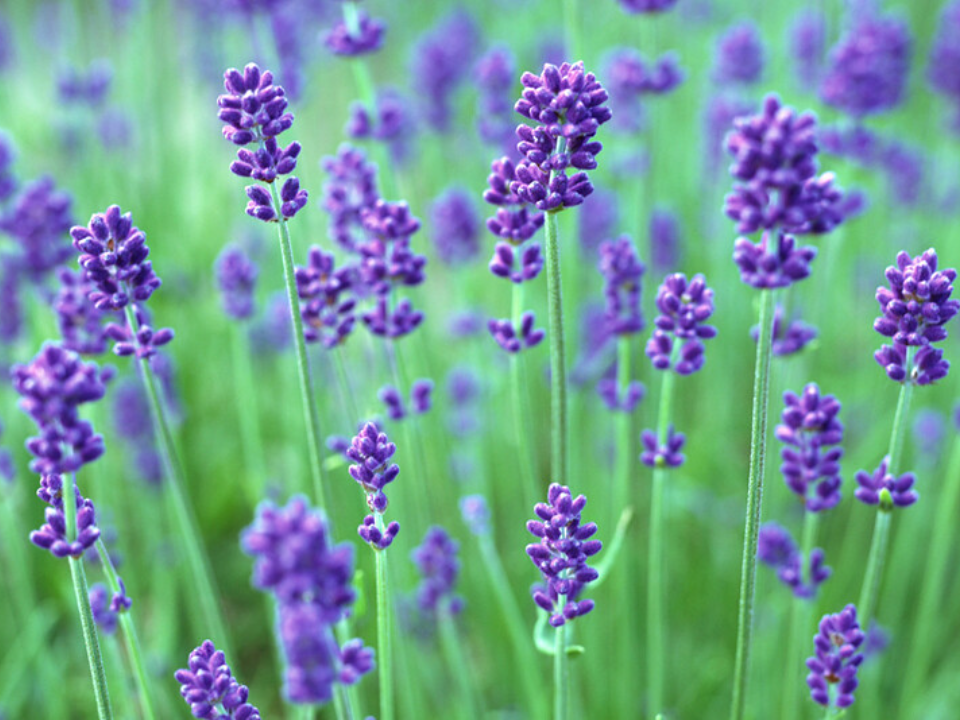
While Lavender is often associated with summer, it can also tolerate cold temperatures and offers aromatic, silvery-green foliage. The plant’s evergreen nature ensures that it remains visually appealing even through the coldest months.
Lavender grows best in full sun and well-drained soil. Its resilience to cold weather, along with its pleasant scent, makes it a popular choice for gardeners looking to add both color and fragrance to their winter landscapes.
This article originally appeared on Avocadu.
